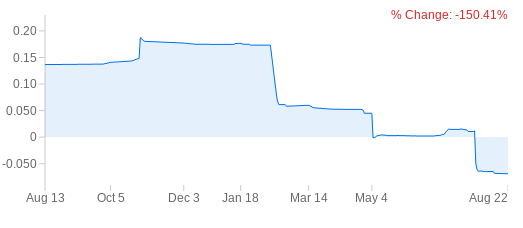- A steep downturn in Shopify’s stock comes as e-commerce’s pandemic-driven boom loses steam
- To survive through these tough economic times, SHOP is laying off workers and cutting spending
- Despite the economic headwinds, Shopify remains a significant e-commerce player, with a solid upside potential
Once a pandemic-era darling, the Canadian e-commerce giant Shopify (NYSE:SHOP) is getting crushed amid the current market rout. The stock has lost 75% of its market value in the past 12 months, and more pain could be in store for the short term if macroeconomic conditions continue to deteriorate.
The Ottawa-based company told investors last month that the declining trend in sales will continue in the second half of this year as customers cut back on their spending amid the worsening macroeconomic backdrop.
Shopify sales surged 86% between 2019 and 2020 and another 57% in 2021. By May, however, the company warned of slower revenue growth as the pandemic boom faded. Sales in the most recent quarter, which ended on June 30, rose just 16%, while the company suffered three cents a share loss on an adjusted basis. For the fiscal year ending in December, analysts forecast 19% revenue growth.

Source: InvestingPro
To sail through the current macroeconomic conditions, Shopify is in a belt-tightening mode. It cut about 10% of its workforce in July, as Chief Executive Officer Tobi Lutke acknowledged the company’s decision to expand rapidly wasn’t a good move.
Lutke wrote on the company’s website:
“We bet that the channel mix--the share of dollars that travel through e-commerce rather than physical retail--would permanently leap ahead by five or even ten years [due to the pandemic].
It’s now clear that the bet didn’t pay off. What we see now is the mix reverting to roughly where pre-Covid data would have suggested it should be at this point.”
Big Economic Moat
These adverse developments suggest that Shopify’s growth outlook has drastically changed after the pandemic era boom, and its stock has lost momentum, which fueled more than 350% gains in 2020 and 2021. These factors are reflected in the current stock price, providing long-term investors a good entry point in a company that has developed a big enough economic moat since its 2015 IPO.

Source: InvestingPro
One of the main strengths of Shopify is that it offers small businesses a very effective and cost-efficient way of building a secure online store. The platform handles all the hardware security, data backup, and payment processing aspects of the business, freeing up merchants to just focus on their core businesses.
These capabilities will likely remain in great demand as e-commerce continues to gain more market share from brick-and-mortar retailers. According to Morgan Stanley, the e-commerce market has plenty of room to grow and could increase from $3.3 trillion today to $5.4 trillion in 2026.
For investors, according to the bank, this means the e-commerce boom will likely continue, offering opportunities for gains across multiple businesses, regions, and verticals—and at a time when recent stock valuations don’t necessarily reflect that growth.
Shopify, whose merchants account for 10% of all U.S. e-commerce sales, has also positioned itself to remain a significant player in the field by making acquisitions and expanding its global e-commerce capabilities.
Last month, the company completed its $2-billion acquisition of the San Francisco-based data provider Deliverr to narrow its competition with Amazon.com (NASDAQ:AMZN) and offer its merchants a one-stop shop for their logistics needs.
While upgrading SHOP in a recent note, Atlantic Equities said that the e-commerce stock has upside after investors priced in recession expectations.
Its note adds:
“E-commerce is reaccelerating as reopening headwinds stabilize, and secular tailwinds return as the primary growth driver. Although inflation and recession headwinds could increase, estimates now generally assume further moderation in underlying growth despite signs of stability.
Shopify remains a high-quality market share gainer, and we now see upside to estimates following the recent reset, so we are upgrading the stock to Overweight.”
Bottom Line
SHOP stock will likely remain under pressure this year as the company deals with a particularly harsh macroeconomic backdrop--especially for the e-commerce business.
However, its current valuation has become compelling after this year’s stock plunge, providing long-term investors an opportunity to take a position in a company with a solid track record of exceeding expectations.
Disclosure: The writer doesn’t own Shopify stock.
